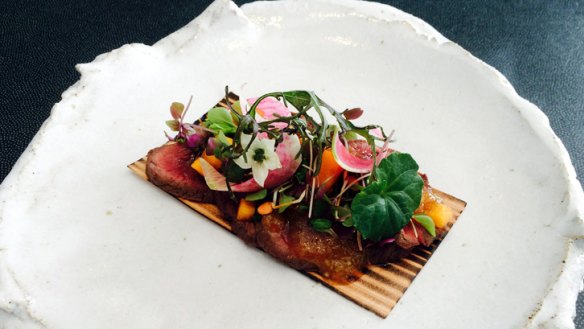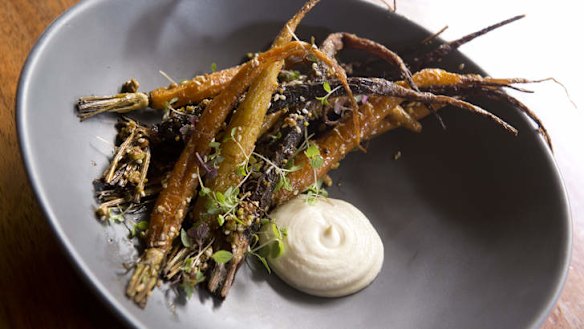So long, simple white plate: Brisbane eateries experiment with creative crockery

Serving up a dish in modern Australian restaurants has come a long way since the simple white plate.
Many top Brisbane eateries are experimenting with the crockery they use and the ways it can enhance the dining experience, from highlighting an ingredient to evoking an emotion.
The editor of the Brisbane Times Good Food Guide, Natascha Mirosch, says there's been a definite shift in the types of plates being used in restaurants.

“Chefs are experimenting not just with how they place their food on the plate, but the plateware itself,” she says.
“Rather than a blank canvas for the food, the plate is now being recognised as part of the 'artwork' in an altogether more holistic approach.
“To this end, we've seen a lot more bespoke plateware in restaurants this year, with organic shapes and different textures being used.”
Danielle Gjestland, from Noosa's two-hat Japanese restaurant Wasabi, regularly changes the servingware used at the restaurant.
"The Japanese fundamentally believe that a beautiful dish enhances the flavour of the food,” she says.
“They are true advocates of the old adage 'you eat with your eyes first'.”
According to Gjestland, while Australian restaurants have always placed importance on the presentation of their dishes, a growing trend means this presentation no longer solely revolves around the food on the plate.
"The plate is more than just a vessel,” she says.
“More and more restaurants are throwing out their 12-inch plain white porcelain and making critical decisions about shape, size, colour and texture, " she says.
According to Gjestland, in Japanese cuisine the choice of plate greatly influences how the dish is presented, with the season, origin of ingredient and the general emotion the chef is trying to evoke from the guests all considered.
"The order of the plateware is factored in so the whole meal is telling a story,” she says.
But it isn't just a trend in Japanese restaurants. Ben Williamson, head chef at the Middle Eastern-inspired one-hat restaurant Gerard's Bistro, is using handmade ceramics with an organic shape and matte finish. Although he also believes "the classic white plate will never be out of trend".
"The texture of the plate is important and ... the more natural the better,” he says.
"People dine out for a total experience and food and wine is in itself a craft or art form."
At Toowong's hatted 85 Miskin St, terracotta pots, slate, glass and olive wood boards are all incorporated into serving.
"The first thing people notice about a dish is the visual aspect and it creates excitement and anticipation," head chef Brent Farrell says.
At three-hat restaurant Esquire, head chef Ryan Squires uses David Edmonds ceramics. These are considered as part of the whole experience, with taste remaining No.1.
"We don't have a plating philosophy as such at Esquire. I try to teach my staff that the quantities and positions of ingredients are extremely important,” he says.
"There are some simply beautiful white plates around but with a slightly different texture or shape.
"Creative plating does enhance food but it's not the most important priority - the taste is."
Noosa's Wasabi restaurant will be showcasing the ceramic art of Sarah Sheppard as part of a five-course degustation ($160) on Saturday, July 26, as part of Good Food Month, presented by Citi. See brisbane.goodfoodmonth.com.
